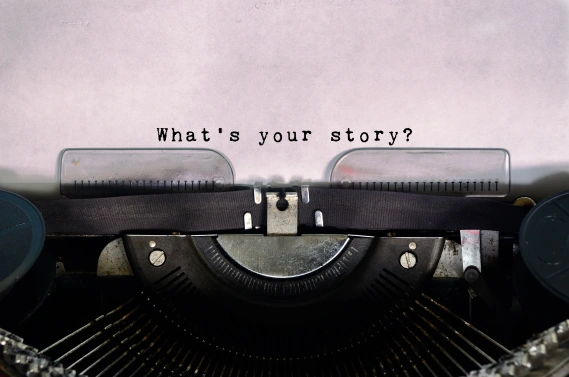It seems everyone these days is talking about storytelling in business. It’s not enough that you need to know how to run your business and do it well. You have to entertain too. And that can feel overwhelming.
What does storytelling in business mean?
It involves sharing details about you and your business through an engaging narrative. Rather than just providing the bare facts about who you are, your audience wants to hear:
- Why you do what you do
- How you got started
- What you did to overcome any obstacles
- What you have created and
- Why it's so good.
And a story can convey all of that detail in a far more compelling way than just listing out answers to those questions.
Benefits of storytelling
One of the key reasons that storytelling has become so popular is that it allows for a deeper emotional connection. Humans have used stories for hundreds of years as a way to connect with others, build empathy and make sense of the world.
Your audience is more likely to want to do business with you if you can get their attention with a unique story—a story that gives them insights into your business, and why they should care.
As well-known marketer, Seth Godin, said on a recent podcast interview, “You used to be able to pin people to the wall. There were only 3 TV stations. Now there is infinite choice and limited attention.”
A symptom of limited attention is that it can be a lot harder to be memorable because you’re quickly being replaced by the next experience. And the next.
A great story is one that is memorable for your audience. Being memorable means you’re more likely to grow sales, but also foster word of mouth. People love sharing stories that they can relate to.
But where do you start?
There are four key elements to a compelling business story:
- Problem – What problem were you trying to address in setting up your business? At the heart of most business origin stories is a frustration over the current situation or accepted practices.
- Challenges – What obstacles did you need to overcome to solve your problem? This is often left out of many stories, but it’s what increases the stakes and makes the triumph more compelling.
- Triumph – This is where you get to talk about the solution that you created and how it solved the problem you set out to address
- Evolution – Where are you headed to next? This is your opportunity to get your audience excited about what you’ll create in the future.
Let’s look at an example
To show what these four elements in action look like, let's go through an example of storytelling that has been done well by Basecamp, a project management software, in its “About Us” story.
Problems

From the start, Basecamp clearly defines its problem: The team was busy but disorganized, which meant important projects began slipping through the cracks.
Challenges

Basecamp then describes its specific need (“something to help us communicate ideas, organize the work to be done, and present work to stakeholders”), followed by the obstacle the team faced trying to meet those needs (the tools they tried were too complicated or hard to use, which led them to slip back into their old ways).
By explaining what they were looking for they are able to demonstrate how deep in the trenches they were, and what an acceptable solution needed to look like—it needed to a alleviate their “pain” of missed work.
Triumph

Basecamp overcame their challenge by creating their own solution, which led to triumph: projects began running better, they found a sense of order, and their clients started to notice.
Evolution

By describing how their business has grown (“nearly 15,000,000 people…”), they show the evolution of their success. Also, by writing out the number in-full, rather than as “15 million,” they’re showing the magnitude of their success. That’s a lot of zeros to help reinforce that point!
The only thing they don’t do in their evolution is speak to what’s next. But for a company that goes against the grain in not wanting to grow big and take over the world, that fits their overall company ethos. They want to keep doing what they’re doing and do it well.
Getting started with your story
The great thing about storytelling for business is that you don’t need a large budget or lots of zeros in your customer number. With the right outline and messaging, anyone can use storytelling to differentiate their business and attract customers who share the same passion and interests as you and your business. It also doesn’t have to be time-consuming or complicated. Once you’ve created your story, you won’t need to do it again (or at least not until you’ve reached bigger and better milestones to add to it).
After working with, for and in small businesses for 20+ years, Jill Brennan, founder of Harbren Marketing, has had a front row seat to the confusion and frustration that plagues many business owners when it comes to marketing. Jill is on a mission to empower as many business owners as possible to make better decisions when it comes to telling their story and growing their business.


